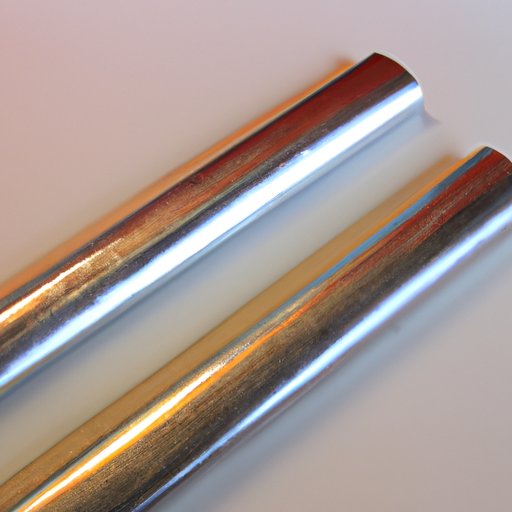Introduction
JB Weld is a two-part epoxy adhesive that is often used to bond metal, wood, and plastic materials together. It is well known for its strength and durability, and it can be used in a wide variety of applications. One of the most common uses for JB Weld is bonding aluminum surfaces. But how strong is JB Weld on aluminum? This article will explore this question and provide a detailed guide on how to use JB Weld on aluminum surfaces.
Benefits of Using JB Weld on Aluminum
One of the main benefits of using JB Weld on aluminum is its superior strength compared to other adhesives. When cured, JB Weld has a tensile strength of 3960 PSI, making it one of the strongest adhesives available. It is also able to withstand extreme temperatures, from -67°F to 500°F, making it an ideal choice for bonding aluminum surfaces in a variety of environments.
In comparison to other adhesives, JB Weld is much stronger and more durable. For example, traditional super glue or cyanoacrylate only has a tensile strength of 600-1200 PSI, making it significantly weaker than JB Weld. Additionally, many other adhesives are not able to withstand extreme temperatures, making them unsuitable for use on aluminum surfaces.
Step-by-Step Guide to Using JB Weld on Aluminum
Using JB Weld on aluminum surfaces is relatively simple, but there are some important steps that should be followed to ensure optimal results.
Preparing the Aluminum Surface
The first step is to prepare the aluminum surface by cleaning it with a degreaser. This will remove any dirt, oil, or debris that could interfere with the bond. The surface should then be roughened up with a wire brush or sandpaper to create a better surface for the adhesive to bond to. If there are any gaps or cracks, they should be filled in with epoxy putty before applying the JB Weld.
Applying the JB Weld
Once the surface is prepared, the next step is to mix the two parts of the JB Weld together according to the instructions on the package. Once mixed, the JB Weld should be applied to the aluminum surface. It is important to make sure that the JB Weld covers the entire area that needs to be bonded. If necessary, additional layers can be applied to ensure that the bond is as strong as possible.
Curing the JB Weld
Once the JB Weld is applied, it must be allowed to cure. The curing time can vary depending on the temperature and humidity of the environment, but typically it takes 24 hours for the JB Weld to reach its full strength. During the curing process, it is important to keep the area free of dust and moisture to ensure a strong bond.

Factors Affecting the Strength of JB Weld on Aluminum
There are several factors that can affect the strength of JB Weld on aluminum surfaces. Temperature is one of the most important factors, as the bond will be stronger at higher temperatures. It is also important to ensure that the aluminum surface is clean and free of debris to ensure a strong bond. Finally, the quality of the JB Weld and the aluminum surface can also affect the strength of the bond.

Comparison of JB Weld vs Other Adhesives on Aluminum
When comparing JB Weld to other adhesives, it is clear that JB Weld is the best option for bonding aluminum surfaces. It has a much higher tensile strength than other adhesives, making it more resistant to wear and tear. Additionally, it is able to withstand extreme temperatures, making it suitable for use in a variety of environments. On the downside, JB Weld is more expensive than other adhesives, and it requires more preparation and curing time.

Testing the Durability of JB Weld on Aluminum Surfaces
To test the durability of JB Weld on aluminum surfaces, several tests have been conducted. These tests have involved subjecting the bond to various forces, such as tension, shear, and impact. The results of these tests indicate that JB Weld is extremely durable and can withstand forces that would cause other adhesives to fail.
Conclusion
JB Weld is an incredibly strong and durable adhesive that is perfect for bonding aluminum surfaces. It has a much higher tensile strength than other adhesives, making it more resistant to wear and tear. Additionally, it is able to withstand extreme temperatures, making it suitable for use in a variety of environments. However, it is important to follow the steps outlined above to ensure the best results. Testing has shown that JB Weld is extremely durable, making it the best adhesive for bonding aluminum surfaces.

